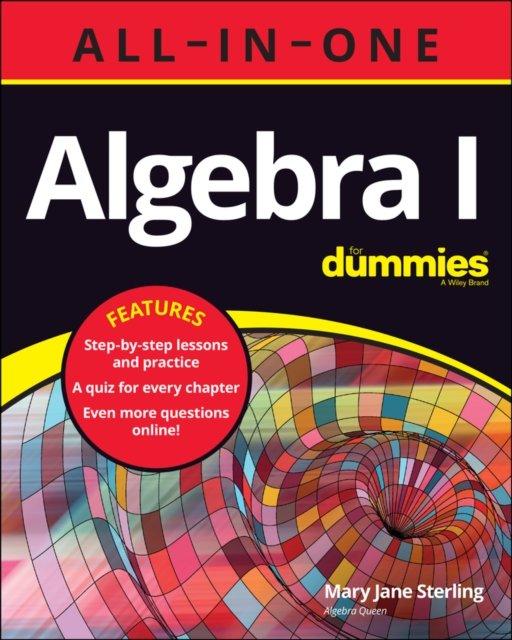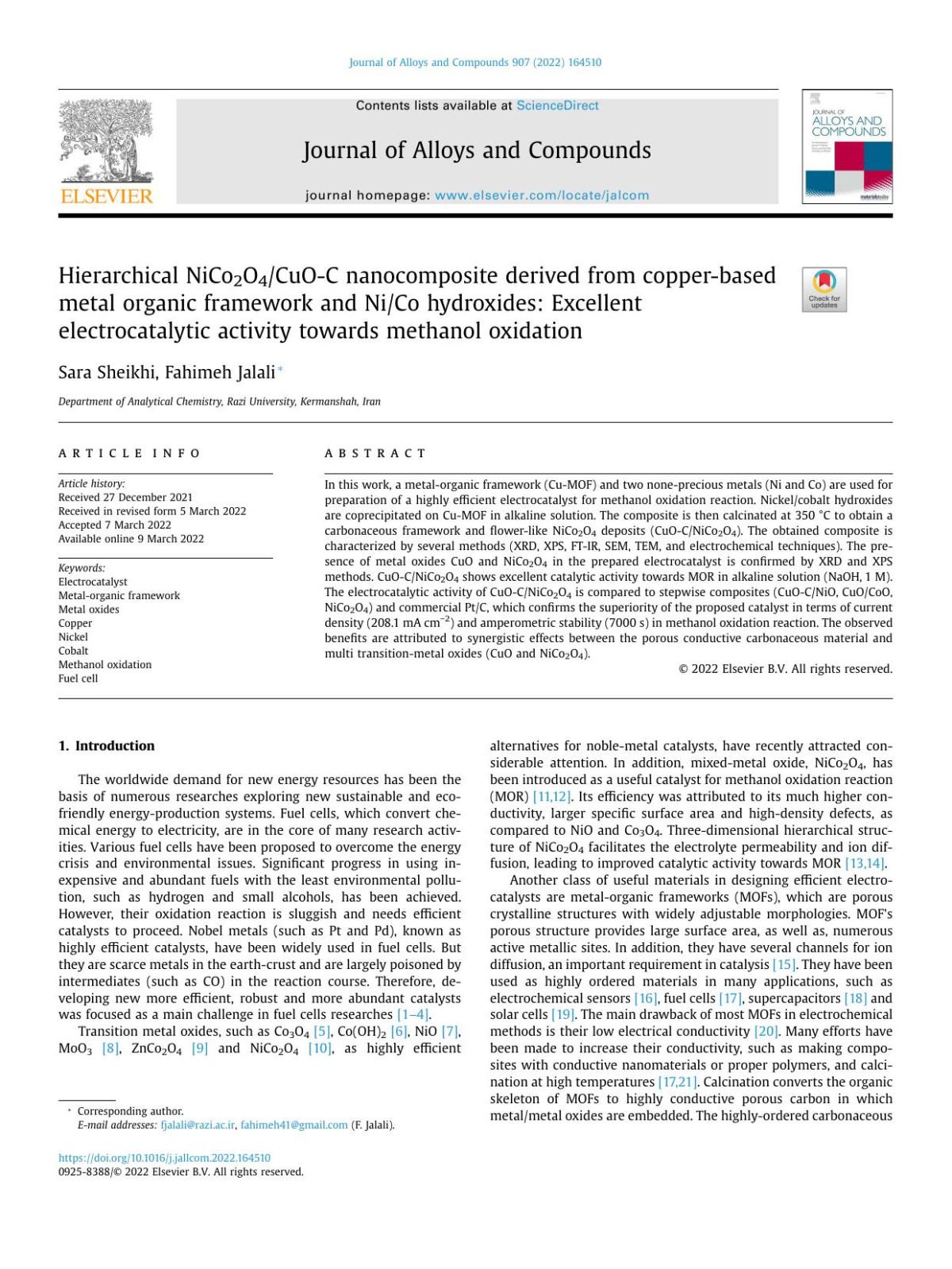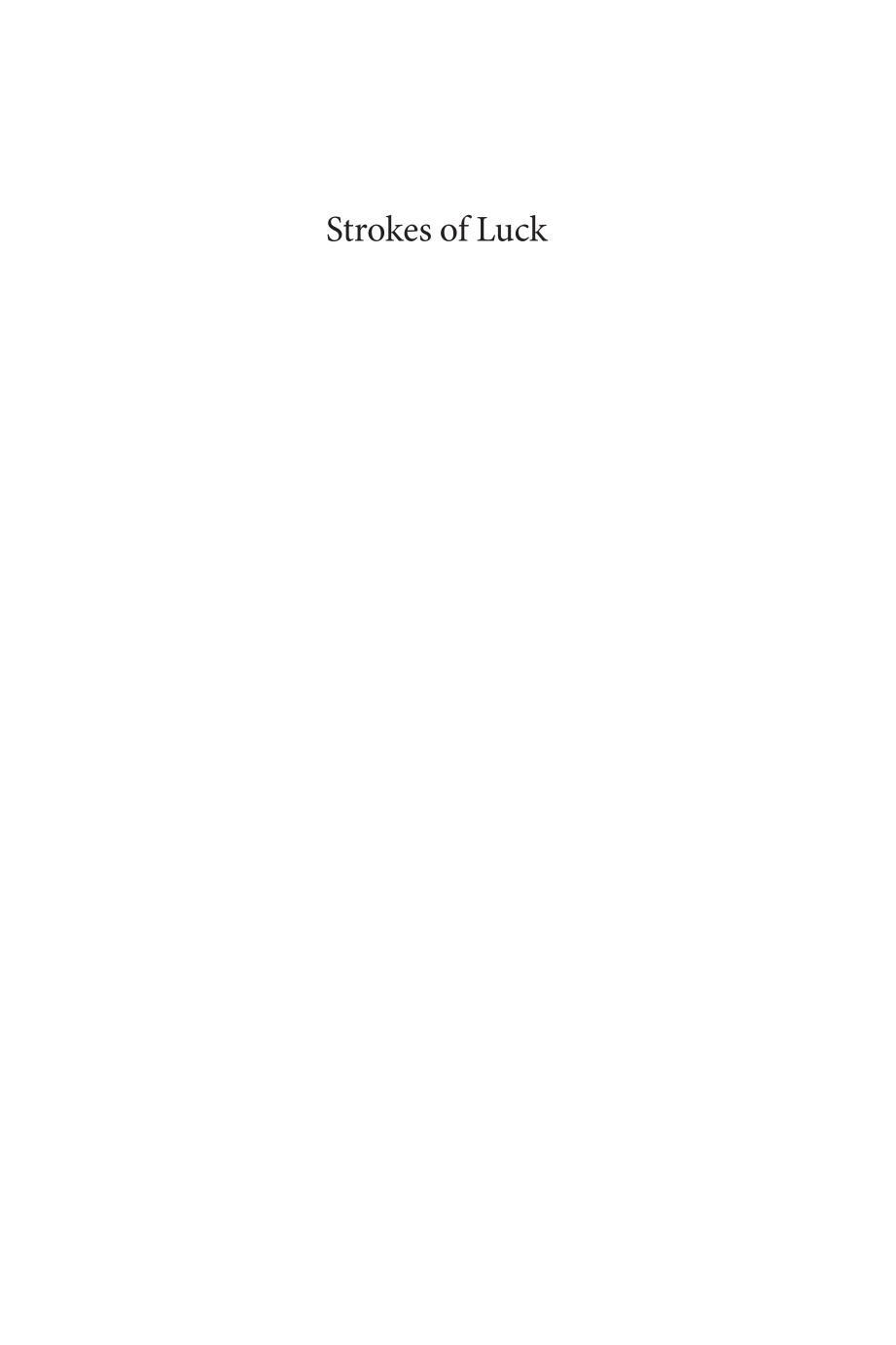Algebra I All-in-One
for Dummies 1st Edition Mary Sterling
https://ebookmass.com/product/algebra-i-all-in-one-for-dummies-1stedition-mary-sterling/
ebookmass.com
Hierarchical NiCo2O4/CuO-C nanocomposite derived from copper-based metal organic framework and Ni/Co hydroxides_ Excellent electrocatalytic activity towards methanol oxidation Sara Sheikhi & Fahimeh Jalali https://ebookmass.com/product/hierarchical-nico2o4-cuo-cnanocomposite-derived-from-copper-based-metal-organic-framework-andni-co-hydroxides_-excellent-electrocatalytic-activity-towardsmethanol-oxidation-sara-sheikhi-fahimeh-j/ ebookmass.com
Whiteout Adriana Anders
https://ebookmass.com/product/whiteout-adriana-anders-3/
ebookmass.com
Strokes of Luck: A Study in Moral and Political Philosophy
Gerald Lang
https://ebookmass.com/product/strokes-of-luck-a-study-in-moral-andpolitical-philosophy-gerald-lang/
ebookmass.com
World Politics: Trend and Transformation, 17e 17th Edition
Shannon L. Blanton
https://ebookmass.com/product/world-politics-trend-andtransformation-17e-17th-edition-shannon-l-blanton/
ebookmass.com






Whenever a task comes to a close, one considers all those who helped make the project happen. For this initiative the list is long! I would like to thank Joanne DaCunha and those at F. A. Davis for their support and guidance. I would like to offer sincere thanks to my talented colleagues who inspired many of the strategies in this text. Years of teaching classes and working with creative and energetic nurses and nurse educators have offered many potential innovative teaching methods and a created a sincere desire to connect with students. This book reflects the talent and dedication inherent of nursing educators both in academic and practice settings. Finally, I would like to extend the greatest level of appreciation to my husband, my three sons, my three daughters-in-law, my three grandchildren, my parents, my friends, and my family. Their devotion, support, and love will continue to add meaning to my life and motivate me to continue to grow in my personal and professional endeavors.
Judith W. Herrman, PhD, ANEF, FAAN
Past Experience with . . . 43
Be Prepared 44
My Biggest Challenge 46
Discussion Starters 47
3Strategies for Large Classrooms 49
“The mediocre teacher tells. The good teacher explains. The superior teacher demonstrates. The great teacher inspires.” —William Arthur Ward
Challenges 49 Ideas 50
Short Clips 50
Read a Story 51
Use the Star 53
Case Studies: Quickie 55
Case Studies: Preclass 56
Case Studies: Interspersed 58
Case Studies: Continuing 59
Case Studies: Unfolding 61
Use the Book 63
Worksheets 64
All Things Being Equal 67
When You Think of This. Think of That 69
Current Events 70
Bring In the Reinforcements and In-class Applications 72 Speak UP 75
Quotation Pauses 77
Group Thought 77
Using Mnemonics 83
Keep ’Em Awake Quizzes, Quickie Quizzes, Quizzes that Count 84
Feedback Lecture 87
4Strategies for Small Classes 91
“Implementing creative teaching strategies that will change a classroom from a four walled room with educational hopes into an environment that is infused with excitement, curiosity, and genuine student learning.” —Simplicio
Challenges 91 Ideas 92
Six Hats Exercise 92
In-basket exercise 94
The Right Thing To Do 97
Gaming 100
Imagine and Remember When 105 Twosies 107
What’s the Point? or What’s the Big Deal? 109
Jigsaw 111
Clinical Decision-making Exercises 113
Reality Check 121
Muddiest Part 123
In-class Test Questions 124
E-mail Exercises 128
Group Tests 132
Web Assignments 137
Student-led Seminars 138
Self-learning Mini-modules 140
Online Discussion Groups 142
Learning Contracts 144
Condensed Portfolios 145
5Strategies for Clinical Instruction and Orientation 149
“I take one minute a few times a day to look at my goals and see what I want to learn . . . . I can teach myself what I want to learn more easily by taking one minute to catch myself doing something right. . . . We are at our best when we teach ourselves what we need to learn.” —Johnson and Johnson Challenges 149
Ideas 150
Scavenger Hunts 150
Pass the Problem 153
Cooperative Strategies 155
Clinical Quick Write 157
One-Minute Care Plan 159
Ah-hah Journal 162
Creative Lab Skills 164
Equipment Conference 166
Active Reading Conference 168
Grand Rounds 169
V-8 Conference 171
Ideas 278
Case Management Case Studies 278
Incident Report Exercise 279
Delegation Exercise 280
Nurse Practice Act Write to Learn 281
“Call Bell” Examination Questions 282
Safety and Infection Control 284 Ideas 284
What Not to Do or Find the Error 284
Health Promotion and Maintenance 286 Ideas 287
Basics of Maternity Case Study 287
End of Life Case Studies—Documents to Help 288
Psychosocial Integrity 290 Ideas 291
Psychosocial Case Studies 291
Reduction of Risk Potential 293 Ideas 294
Perioperative Care Case Study 294
Pharmacology and Parenterals 295 Ideas 296
Pharmacology Field Trip 296
Pharmacology Critical Thinking Exercises 297
Basic Care and Comfort 298 Ideas 298
Pain Continuing Case Study 298
Physiological Integrity 299 Ideas 299
Two Truths and a Lie 299
What’s the Big Deal and How Is It Treated? 299
NCLEX® Integrated Processes 301 Ideas to Reinforce QSEN Principles 303
Patient/Family-Centered Care 303
Teamwork and Collaboration
Safety 305
Quality Improvement (QI) 306
Evidence-based Practices (EBP) 306
Informatics 307
Conclusion: A Charge to Nurse Educators 309
Chapter 1 The Art of Innovation
“The art of teaching is the art of assisting discovery.”—Mark Van Doran
class objectives. In essence, the lecture method presents information effectively; creative strategies provide diversions that reinforce key material or areas of emphasis. These strategies are grounded in the belief that students are more likely to remember content presented in an atmosphere of creative learning and fun.
You can use innovative teaching methods to highlight key points of a class. This method helps to focus the content, allowing students to sort out information and establish priorities. Setting priorities is always a challenge in nursing education and practice alike. Using an innovative strategy to highlight selected content helps students to hone in on vital information.
Another challenge of nursing school teaching may be summarized in the statement, “We keep adding content to nursing education and don’t take anything out—we just talk faster.” This sentence reflects our need todifferentiate the “need to know” from the “nice to know.” A creative teaching strategy can put the “need to know” label where it needs to go.
What Are the Barriers to Innovative Teaching?
Now we’ve discussed all the reasons to introduce creative teaching strategies. It’s time to address some of the barriers that teachers encounter when attempting to weave creative strategies throughout their material. Schell1 identifies the barriers to innovative teaching as perceived self-worth, social support and authority, tradition, physical environment, past educational experiences, time, and communication skills.
Never Enough Time
Years of teaching and presenting this material to nurse educators has distilled the barriers down to a few categories. The most formidable perceived barrier is time. It takes time to prepare a strategy: the instructor has to relate it to class material, assemble equipment, and practice a smooth transition so that the strategy will fit naturally into the class. In addition, class time may be limited, and creative strategies leave less time for traditional methods.
Nursing educators feel the need to cover content. We all think, “If I don’t say it, they won’t learn it, and it will be my fault.” Instead, we should be thinking of ways to use valuable classroom time to clarify concepts, reinforce more difficult elements, and synthesize other learning methods. Such methods may include assignments, readings, and hands-on experience. By changing our mind-set about the goals of the classroom, we can better incorporate creative strategies despite limited time.
from reading, talking with others, or capitalizing on the experience levels of class participants?
•Do you have the talent to create a learning environment in which students feel free to ask questions, clarify material, and consider alternatives?
•Can you use feedback and evaluative information to give students a clear picture of their progress in the class and to help them improve understanding and performance?
•Do you present a positive role model for the profession and for the need for lifelong learning?
•Do you foster cooperation among students, encourage active learning, and communicate high expectations?
•Do you respect divergent learning styles and adapt teaching to meet the needs of various learners in the group?
•Do you organize your presentations, class conduct, and class structure? Although some teachers are more organized than others, new students need structured methods. These give them a foundation on which to learn, organize their own thoughts, and pattern concepts so that they make sense.
•Do you feel comfortable presenting material in varying settings and with different-sized groups? Can you adapt your teaching methods and styles in these circumstances to provide the greatest benefits for the class?
•Do you have the energy to teach with enthusiasm?
The Student’s-eye View
It’s also important to consider what each class expects from the teachers. In Schell’s study1, students said that they wanted their teachers to:
•Be caring and promote personal growth.
•Include creativity and a variety of strategies in their teaching.
•Be willing to learn as well as teach, demonstrating approachability and availability, and fostering an interactive environment.
•Maintain teacher-student boundaries.
•Demonstrate respect for others and personal qualities deserving of respect.
•Provide feedback to their students.
These statements provide an acceptable consensus on what students perceive as the qualities needed for success. Next we’ll consider the ways
When Were They Young?
Finally, we must consider generational differences when assessing learners. Chester5 notes that in identifying generational differences and determining teaching applications, “The question is not, ‘How old are you?’, but, ‘When were you young?” Asking students to remember whether their experiences in grade school were dominated by a blackboard or a computer screen may offer insights into their current learning needs. Young people who are used to the computer, television, and newer technologies learn at a rapid pace. This indoctrination causes learners to demand interesting, relevant content.
Recent studies focus on generational thinking and the impact of generational differences on education, interests, and performance in theworkplace. Several newly available resources delineate generations according to common learning characteristics6 (see also the Annotated Bibliography).
The Veterans Traditionalists, or “Veterans,” born between 1922 and 1945, tend to be attentive, respectful, and passive learners. They respond to more traditional lecture methods and usually are motivated to learn and work. According to Hobbs,7 the Veterans build on previous wisdom, respect wisdom in others, and learn best when respected for their current levels of knowledge and experience.
This group tends to find creative strategies the most unpleasant. They want to stay in their comfort zone, the lecture format, and their ideals of traditional teacher-student roles. They also may resist group work. In contrast, they tend to follow orders or directives in the classroom. This tendency may result in their cooperation, albeit reluctant, with creative strategies.
The Baby Boomers
The “Baby Boomers,” born between 1946 and 1964––now both students and the parents of students––have come to realize their role as the largest generation of consumers. Both demanding and accepting, this group may or may not endorse technology but has high standards for teaching. Boomers frequently place the responsibility for learning on the quality of the teaching. They will also devote considerable effort to learning if they perceive the information to be valid, relevant, and ultimately useful in their future life or work.
The Boomers learn from experience. They want to be respected for their current levels of experience and learn best with experiential teaching strategies.
•I invented many strategies as the need arose during active teaching of nurses in academic and practice sessions. I experienced other strategies as a student in nursing continuing education classes and derived still others from fellow nurse educators. The importance of sharing for the common good, while giving credit to developers of strategies if they are known, is key to the enhancement of nursing education. A Web site has been created to capitalize on the creativity of many people and create a resource that will keep growing. The link is http://davisplus. fadavis.com/herrman. Please share your successes, challenges, new ideas, and questions on this Web sitefor the benefit of all! Most important, have fun with this book. Pick it up and put it down whenever you want to. You may choose to read it cover to cover or peruse it like a phone book to find what you need. If you can create an environment that promotes sharing, mutual respect, and active learning––an atmosphere that establishes rapport with each student––you will have a positive impact on the learning experience of your class. Enjoy!
References
1.Schell, K: The process of innovative teaching in the generic baccalaureate nursing classroom: A cross-case analysis. Unpublished doctoral dissertation, Widener University, 2001.
2.Tanner, CA: Innovations in nursing education. Journal of Nursing Education 36(6): 243, 1997.
3.Oermann, MH: Using active learning in lecture: Best of “both worlds.” International Journal of Nursing Education Scholarship 1(1): 1–9, 2004.
4.Woodring, BC: Lecture is not a four-letter word! In Fuszard, B: Innovative Teaching Strategies in Nursing. Aspen, Gaithersburg, MD, 1995.
5.Chester, E: A Quick Look at Generation Why. Accessed on January 10, 2007 from www.generationwhy.com.
6.Hopkins, M, and Merilatt, J: Bridging the generation gap. ModRN, pp 56–60, Fall, 2006.
7.Hobbs, J: Generations: A walk through the past, present, and future of nursing. Public presentation, Sigma Theta Tau International Convention, Indianapolis, 2005.






